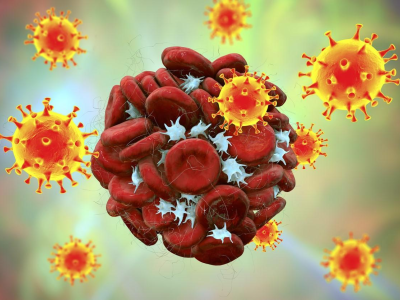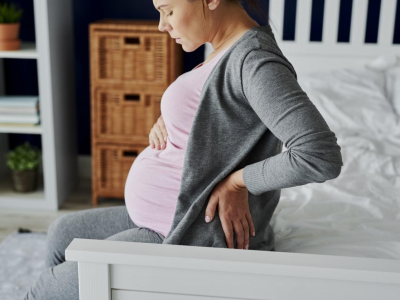Similar immune response after same, different COVID-19 vaccine booster
Among 457 adult participants in an ongoing phase 1/2 clinical trial who completed primary COVID-19 vaccination with the Moderna, Johnson & Johnson (J&J), or Pfizer/BioNTech vaccines, a booster dose with either the same (homologous) or a different brand (heterologous) induced an immune response and was safe.
Baylor College of Medicine researchers led the open-label trial, published yesterday in the New England Journal of Medicine (NEJM).
Adults who had completed a COVID-19 vaccine regimen of two Moderna or Pfizer doses or one J&J dose at least 12 weeks earlier received a booster dose with one of the three vaccines at 10 US sites from May 29 to Aug 13, 2021.
Among the 457 participants, 154 received a booster dose with Moderna, 150 received J&J, and 153 were given Pfizer. Participants were followed for 29 days after receipt of the booster. The researchers said they plan to monitor vaccinees for 1 year to assess long-term immune response.
Regardless of whether participants received a homologous or heterologous ("mix and match") booster, neutralizing antibody concentrations against a SARS-CoV-2 pseudovirus rose fourfold, to 73, and binding levels increased fivefold, to 55.
Homologous boosters increased neutralizing antibody levels fourfold, to 20, and heterologous boosters increased levels sixfold, to 73. Spike protein-specific T-cell responses rose in all participants except for those given a homologous J&J booster.
Concentrations of CD8+ T cells were most durable in those who received the J&J vaccine as their primary dose, and a heterologous J&J booster substantially increased spike-specific CD8+ T cells in those who completed primary vaccination with Moderna or Pfizer.
Adverse events were reported at levels similar to those observed in clinical trials of the primary vaccine series. More than half of participants said they had pain at the injection site, malaise, headache, or muscle pain, but no serious events were noted.
"These data suggest that an immune response will be generated for each of these vaccines used as a booster regardless of the primary COVID-19 vaccination regimen," the study authors wrote. "This speculation is supported by emerging data showing the effectiveness of the BNT162b2 [Pfizer] booster against symptomatic disease in the United States and against severe disease, hospitalization, or death in Israel."
Jan 26 NEJM study
Study: Pulse oximeter readings unreliable indicator of COVID-19 severity
A UK study today shows pulse oximeter readings, which measure the level of oxygen in the blood, are an unreliable tool for gauging COVID-19 severity across different ethnic groups. The study was published in the European Respiratory Journal.
The study was based on electronic data from patients admitted to Nottingham University Hospitals NHS Trust from February 2020 to September 2021 with confirmed COVID-19 infection. Pulse oximetry measurements were compared to blood gas measurements taken within a 30-minute window.
Across all ethnicity groups, there were slight differences in readings between the oximeter and blood gas measurements, but patients of mixed ethnicity saw oximetry readings 7% higher than blood gas readings, the authors said, compared with just 3.2% for White patients. For Black patients, readings were 5.4% higher, and for Asian populations the readings were 5.1% higher.
"These mean differences were particularly marked in the clinically important range when the arterial blood gas demonstrated a true oxygen saturation of 85 to 89%," the authors wrote.
The difference is attributed to pulse oximeters using light wave transmission to gather readings, which can be effected by skin pigmentation.
"This data builds on what we know, which is that patients with darker skin have less accurate oxygen measurements using the pulse oximeters," said senior study author Andrew Fogarty, MD, from Nottingham University in press release. "Any error of measurement of oxygen levels will make assessing the severity of Covid-19 infection more difficult, and may delay delivery of timely medical care."
Jan 27 Eur Respir J study
Jan 27 University of Nottingham press release
New coalition to focus on antibiotic overuse in agriculture
US PIRG (Public Interest Research Group) Education Fund today announced the launch of a new coalition dedicated to reducing antibiotic use in agriculture.
The Coalition to Preserve Antibiotics includes physicians, farmers, and animal and public health professionals. The group says in it mission statement that while overuse of antibiotics in any setting can promote the development of antibiotic-resistant bacteria, its focus is on reducing antibiotic use in agriculture because roughly two thirds of the medically important antibiotics sold in the United States are for use in food-producing animals.
Coalition members believe that antibiotics can and should be used to treat sick animals, but they say the way the conventional food system raises animals for food often relies too heavily on the routine use of antibiotics to compensate for conditions that can lead to disease, and that this overuse breeds antibiotic-resistant pathogens that can threaten both animal and human health.
"Antibiotic resistant organisms are a dire public threat in our hospitals, food supply, communities and environment," infectious disease physician and coalition member Sameer Patel, MD, MPH, said in a press release. "Healthcare workers, farmers, restaurateurs, consumers—all of us can make changes now to reduce unnecessary antibiotic use and decrease the threat of antimicrobial resistance."
The coalition says it will work with stakeholders at all levels of government, industry, and academia to advance better antibiotic stewardship in agriculture.
Jan 27 US PIRG Education Fund press release














